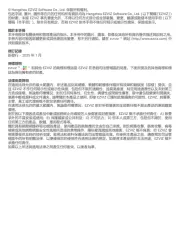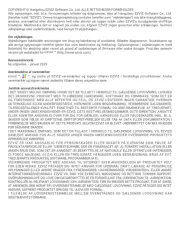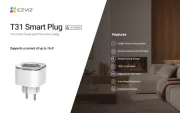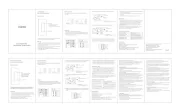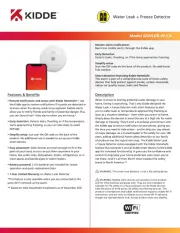LevelOne GES-2108 Manual
Læs gratis den danske manual til LevelOne GES-2108 (33 sider) i kategorien Smart hjem. Denne vejledning er vurderet som hjælpsom af 6 personer og har en gennemsnitlig bedømmelse på 4.8 stjerner ud af 3.5 anmeldelser.
Har du et spørgsmål om LevelOne GES-2108, eller vil du spørge andre brugere om produktet?

Produkt Specifikationer
| Mærke: | LevelOne |
| Kategori: | Smart hjem |
| Model: | GES-2108 |
| Bredde: | 160 mm |
| Dybde: | 95 mm |
| Højde: | 29 mm |
| Vægt: | 350 g |
| Produktfarve: | Sort |
| Pakkevægt: | 500 g |
| Pakkedybde: | 122 mm |
| Pakkebredde: | 264 mm |
| Pakkehøjde: | 52 mm |
| Opbevaringstemperatur (T-T): | -40 - 70 °C |
| Relativ luftfugtighed ved drift (H-H): | 10 - 90 % |
| Relativ luftfugtighed ved opbevaring (H-H): | 5 - 95 % |
| Driftstemperatur (T-T): | 0 - 45 °C |
| Hurtig start guide: | Ja |
| Pakketype: | Kasse |
| Støjniveau: | 0 dB |
| Strømkilde: | DC |
| Strømforbrug (maks.): | 6 W |
| Pallens bruttobredde: | 1200 mm |
| Pallens bruttolængde: | 800 mm |
| Netværksstandarder: | IEEE 802.1Q, IEEE 802.1p, IEEE 802.3, IEEE 802.3ab, IEEE 802.3az, IEEE 802.3u, IEEE 802.3x |
| Webbaseret administration: | Ja |
| Servicekvalitet support (QoS): | Ja |
| LED-indikatorer: | Link, Power |
| AC-adapter inkluderet: | Ja |
| Bæredygtighedscertifikater: | CE, RoHS |
| Hovedkassen højde (udvendigt): | 390 mm |
| Hovedkassens længde (udvendigt): | 330 mm |
| Hovedkassens bruttovægt (udvendigt): | 18700 g |
| Hovedkassens bredde (udvendigt): | 550 mm |
| DC indgangsspænding: | 12 V |
| Oprindelsesland: | Kina |
| Indgangsstrøm: | 1 A |
| Produkter pr. hovedkasse (udvendigt): | 36 stk |
| Flashhukommelse: | 2 MB |
| Fuld duplex: | Ja |
| Strøm over Ethernet (PoE): | Ingen |
| Overholdelse af bæredygtighed: | Ja |
| Gennemsnitstid mellem fejl (MTBF): | 43800 t |
| Ydre emballage nettovægt: | 700 g |
| Switch-type: | Administreret |
| Switch lag: | L2 |
| 10G understøttelse: | Ingen |
| Auto MDI/MDI-X: | Ja |
| VLAN understøttelse: | Ja |
| Flowkontrol support: | Ja |
| Port-spejlning: | Ja |
| Antal VLAN'er: | 32 |
| Link aggregering: | Ja |
| Broadcast stormkontrol: | Ja |
| Vituelle LAN funktioner: | Tagged VLAN |
| Basis omskiftning RJ-45 Ethernet porte, antal: | 8 |
| Basis omskiftning RJ-45 Ethernet porttype: | Gigabit Ethernet (10/100/1000) |
| IGMP snooping: | Ja |
| MAC adresselabel: | 4000 entries |
| Switch kapacitet: | 16 Gbit/sek. |
| Antal køer: | 4 |
| Jumbo Frames support: | Ja |
| Jumbo rammer: | 9000 |
| Stativ-montering: | Ingen |
| Varmeafgivelse: | 20.4 BUT/t |
| Multicast-understøttelse: | Ja |
| Gigabit Ethernet (kobber) porte, antal: | 8 |
| Begrænsning af hastighed: | Ja |
| Strømforsyning inkluderet: | Ja |
| Halv dupleks: | Ja |
| MAC-adresse auto-indlæring understøttet: | Ja |
| MAC-adresse auto-forældelse understøttet: | Ja |
| Auto-forhandling: | Ja |
| Pakke bufferlager: | 1.5 MB |
| Overspændingsbeskyttelse: | 8 kV |
| Beskyttelse ved overspænding: | Ja |
| Antal papkasser pr. palle (luft): | 16 stk |
| Pallehøjde (luft): | 1704 mm |
| Ventilatorfri: | Ja |
Har du brug for hjælp?
Hvis du har brug for hjælp til LevelOne GES-2108 stil et spørgsmål nedenfor, og andre brugere vil svare dig
Smart hjem LevelOne Manualer

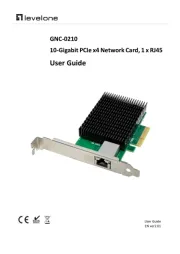
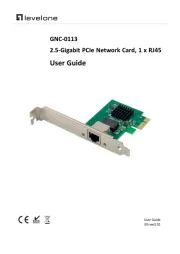


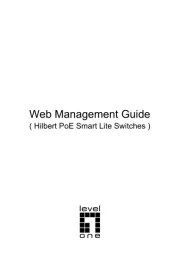
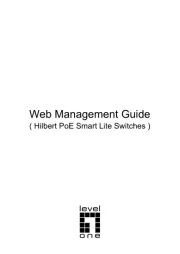
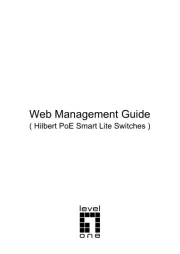

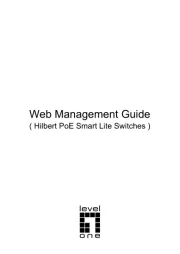
Smart hjem Manualer
- JANDY
- Homematic IP
- August
- Home Easy
- Mueller
- EQ3
- Elsys
- Airlive
- Fibaro
- Govee
- Hombli
- Popp
- Hikvision
- Drayton
- Intertechno
Nyeste Smart hjem Manualer



